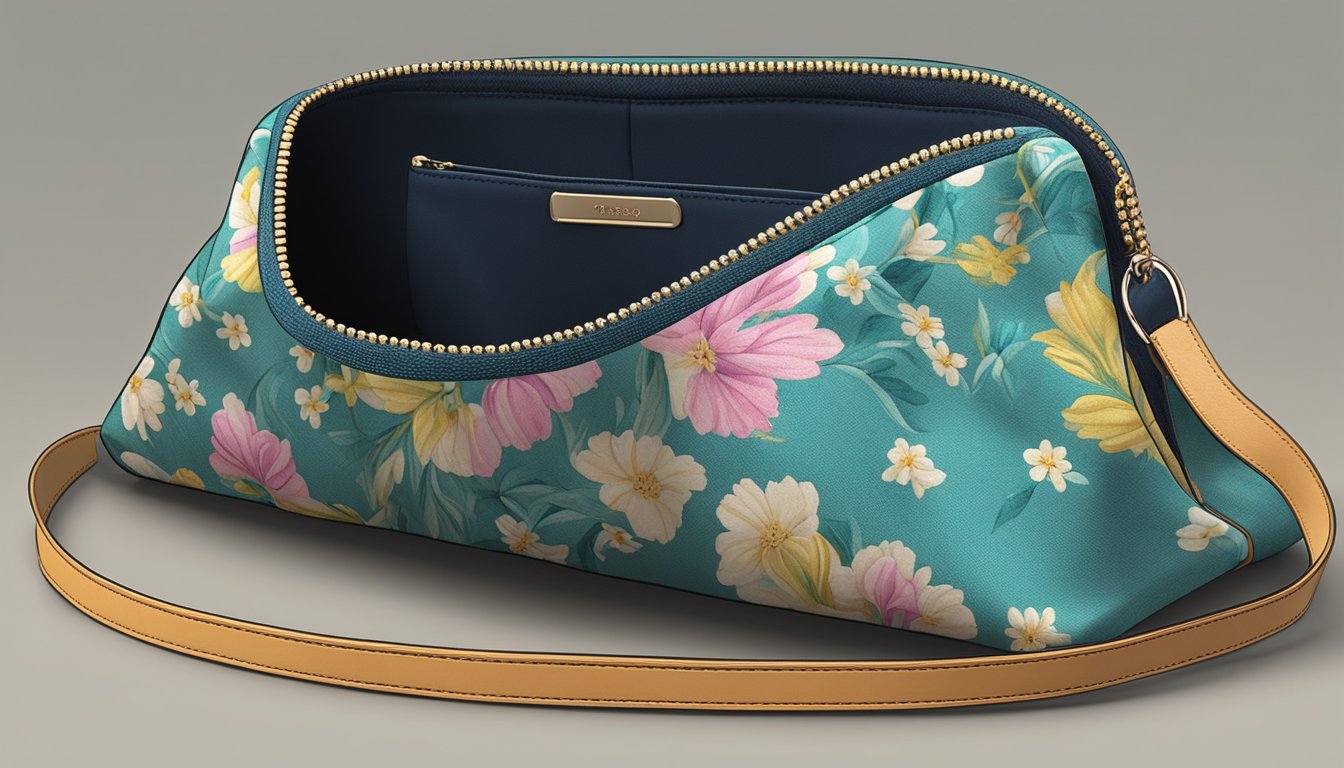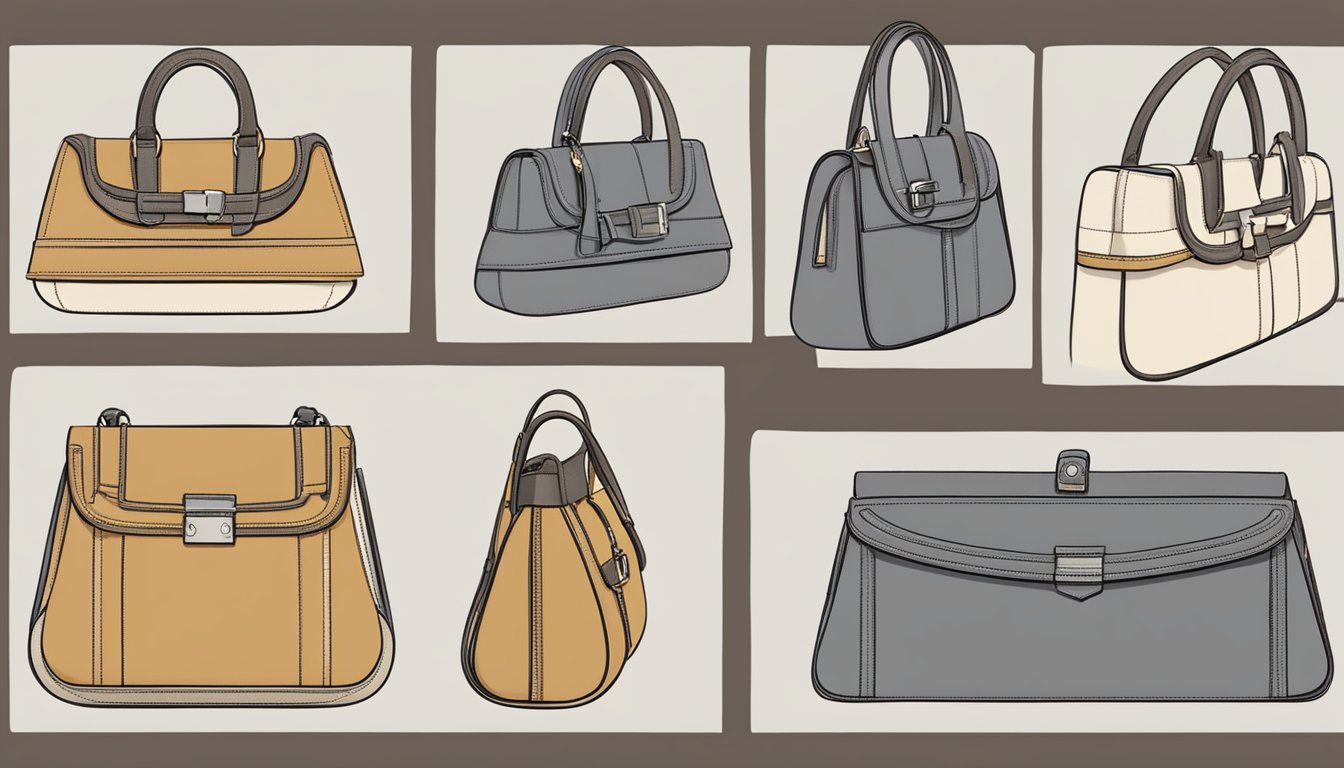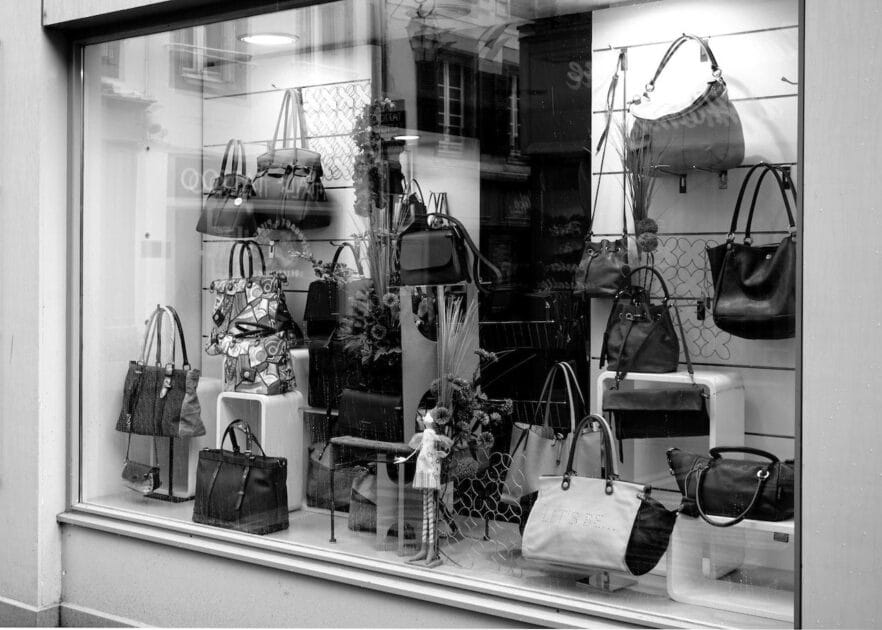Do you ever find yourself frustrated with your purse constantly flopping over? It can be a real hassle when you’re trying to find something in your bag, and it’s just a jumbled mess. Luckily, there are some simple tricks to make your purse stand up and stay organized.
Understanding the basics of purse making is the first step in creating a bag that will stand up on its own. Choosing the right materials is also crucial in ensuring that your purse has the structure it needs. Once you have your materials, creating a pattern and assembling the purse is the next step. But adding structure to your purse is what will really make it stand up and stay organized.
Key Takeaways
- Understanding the basics of purse making is crucial in creating a bag that will stand up on its own.
- Choosing the right materials and adding structure to your purse are key in ensuring that your bag stays organized.
- Incorporating pockets and organizers can also help keep your purse tidy.
Understanding the Basics of Purse Making

Making a purse that stands up on its own can be a bit tricky, but with some basic knowledge and a little practice, you can create a beautiful bag that is both functional and stylish. Here are some tips to get you started:
Choosing the Right Fabric
When it comes to making a purse that stands up, the fabric you choose is crucial. You want to select a fabric that is sturdy enough to hold its shape, but not so stiff that it won’t bend or flex when you need it to. Some good options include canvas, denim, or upholstery weight fabric.
Adding Interfacing
Interfacing is a type of material that is added to the inside of a purse to give it structure and support. There are many different types of interfacing available, so it’s important to choose one that is appropriate for your project. Fusible interfacing is a popular option because it can be easily attached to the fabric with an iron.
Sewing Techniques
When sewing a purse that stands up, it’s important to pay attention to the details. Make sure to sew straight lines and use a tight stitch length to create a strong seam. When attaching the straps or handles, reinforce the stitching with an “X” pattern to give it extra strength.
Box Corners
Box corners are a great way to give your purse a flat bottom that will help it stand up on its own. To create box corners, simply fold the bottom of the purse in half so that the side seam and bottom seam meet. Sew across the corner at a 90-degree angle, then trim off the excess fabric.
Tutorials and Patterns
If you’re new to purse making, there are many tutorials and patterns available online that can help you get started. Look for tutorials that are labeled “easy” or “beginner” to help you build your skills. Some popular purse patterns include the tote bag, the crossbody bag, and the clutch.
By following these basic tips and techniques, you can create a purse that stands up on its own and looks great too. With a little practice and patience, you’ll be making beautiful purses in no time!
Choosing the Right Materials
https://www.youtube.com/watch?v=J1WEGO1beFs&embed=true
When it comes to making purses stand up, choosing the right materials is crucial. Here are some materials that can help you achieve a sturdy and upright purse:
Leather
Leather is a popular material for purses because it is durable and can maintain its shape. If you’re making a leather purse, choose a thicker leather that can hold its shape without collapsing.
Plastic
Pieces of plastic or hard thick paper can be used inside the layers to keep your purse rigid and upright. If the plastic insert is in the bottom part of the bag, it will help maintain the shape. However, some brands of bags don’t add this for a few reasons, such as making the purse heavier.
Tissue Paper
Tissue paper can be used to stuff inside your purse to help it keep its shape. However, it’s not a long-term solution as the tissue paper can easily get crushed and lose its shape.
Double-Sided Tape
Double-sided tape can be used to attach the lining of your purse to the outer fabric, which can help prevent the lining from sagging and causing the purse to lose its shape.
Cardboard
Cardboard can be cut to fit the shape of your purse and placed inside to help it maintain its shape. However, cardboard can easily get damaged or bent, so it’s not a long-term solution.
Fusible Fleece
Fusible fleece is a type of interfacing that can be ironed onto the fabric to add structure and stiffness. It’s a great option for making purses that need to stand up on their own.
By choosing the right materials, you can make sure your purse stands up and maintains its shape.
Creating the Pattern
https://www.youtube.com/watch?v=DQ6pxPvTggs&embed=true
When it comes to making a purse that stands up, creating the right pattern is key. You want to choose a pattern that has a flat bottom and straight edges, as this will help your purse to stand up on its own. You can either create your own pattern or use a pre-made one.
« Why Don’t You Put Your Purse on the Floor? Here’s Why It’s Not a Good Idea
How to Clean Your Thrift Store Purse: Tips and Tricks »
If you’re creating your own pattern, you’ll want to start by drawing out the shape of your purse on a piece of paper. Make sure to include a flat bottom and straight edges. You can use a ruler to help you get straight lines. Once you have your basic shape, you can start to add details like pockets, zippers, and straps.
If you’re not confident in your ability to create your own pattern, you can find plenty of purse patterns online. Pinterest is a great resource for finding patterns, as there are thousands of patterns available for free. You can also purchase sewing patterns from websites like Etsy or Amazon.
When choosing a pre-made pattern, make sure to look for one that has a flat bottom and straight edges. This will ensure that your purse will stand up on its own. You can also look for patterns that include instructions for adding interfacing or foam to help your purse stand up.
Overall, creating the right pattern is essential when it comes to making a purse that stands up. Whether you’re creating your own pattern or using a pre-made one, make sure to choose a pattern with a flat bottom and straight edges. This will give your purse the structure it needs to stand up on its own.
Assembling the Purse
https://www.youtube.com/watch?v=uU6jDm9KUxs&embed=true
Now that you have all the necessary materials and have cut out your pattern pieces, it’s time to assemble your purse. Follow these steps to ensure your purse stands up on its own:
- First, pin the interfacing to the wrong side of your purse fabric pieces. Make sure to align the edges and corners properly.
- Using an iron, press the interfacing onto the fabric, following the manufacturer’s instructions. This will help fuse the two together and give your purse structure.
- Next, sew the purse pieces together, right sides facing each other. Make sure to leave an opening for turning the purse right side out.
- Once the purse is sewn together, trim the seam allowances and turn the purse right side out through the opening.
- Use your fingers or a point turner to push out the corners and edges of the purse.
- Finally, topstitch around the top edge of the purse, making sure to catch the opening and close it up.
By following these steps and using interfacing, your purse should stand up on its own. If you find that your purse is still floppy, consider using a stiffer interfacing or adding a cardboard or foam insert to the bottom of the purse. With a little patience and attention to detail, you can create a beautiful and functional purse that stands up on its own.
Adding Structure to Your Purse
https://www.youtube.com/watch?v=OBMVNmocbRM&embed=true
If your purse is floppy and won’t stand up, it can be frustrating. Luckily, there are a few things you can do to add structure and make it sturdier.
One way to add structure is by using a purse organizer. These come in different sizes and shapes and can be inserted into your purse to add support and help it keep its shape. You can find purse organizers online or in stores that sell handbags.
Another option is to use a piece of cardboard or foam board to reinforce the bottom of your purse. Cut the material to fit the bottom of your purse and insert it inside. This will help the corners of your purse stay upright and give it more structure overall.
In addition to using a purse organizer or cardboard, you can also add a stiffener to the sides of your purse. This can be done with interfacing material that is sewn into the lining of your purse. It will help your purse keep its shape and prevent it from flopping over.
By adding structure to your purse, you can make it sturdier and more functional. Consider trying one or more of these methods to help your purse stand up and stay upright.
Designing the Handles and Straps
https://www.youtube.com/watch?v=duNDZJk7-6E&embed=true
When designing a purse, it’s important to consider both its functionality and its appearance. Handles and straps are essential components of any purse, and they play a crucial role in determining how comfortable and practical the purse is to use. Here are some tips for designing handles and straps that are both stylish and functional:
1. Choose the Right Material
The material you choose for your purse handles and straps will depend on the style of the purse and your personal preference. Leather, fabric, and chain are all popular options. Leather is durable and stylish, while fabric is lightweight and easy to customize. Chain straps can add a touch of glamour to an evening bag. Consider the weight of the purse and the amount of weight it will need to carry when selecting your material.
2. Determine the Length
The length of the handles or straps will depend on the style of the purse and how you intend to carry it. Shoulder bags typically have longer straps that allow the purse to hang at hip level, while handbags have shorter handles that allow the purse to be carried in the hand or on the forearm. Crossbody bags have a longer strap that allows the purse to be worn across the body. Consider your own height and body shape when deciding on the length of the handles or straps.
3. Add Padding
Padded handles and straps can make a purse more comfortable to carry, especially if it will be carrying a heavy load. Consider adding padding to the handles or straps to distribute the weight more evenly and reduce pressure on the shoulders or hands.
4. Experiment with Shape and Width
The shape and width of the handles or straps can have a big impact on the overall look and feel of the purse. Experiment with different shapes and widths to find a style that complements the purse design and feels comfortable to carry. Wide straps can be more comfortable and distribute weight more evenly, while narrow straps can be more elegant.
5. Consider Hardware
Hardware such as buckles, clasps, and rings can add a finishing touch to the handles or straps. Consider the color and material of the hardware to ensure it complements the purse design. Additionally, make sure the hardware is sturdy and secure enough to support the weight of the purse and its contents.
Designing the handles and straps of a purse requires careful consideration of both form and function. By choosing the right materials, determining the length, adding padding, experimenting with shape and width, and considering hardware, you can create handles and straps that are both stylish and practical.
Incorporating Pockets and Organizers
https://www.youtube.com/watch?v=a61SdZB7FnQ&embed=true
If you’re tired of digging through your purse to find your keys, phone, or lipstick, incorporating pockets and organizers into your purse can make a big difference. Not only will you be able to find what you need quickly, but it can also help your purse stand up on its own.
One option is to use a purse organizer. These are typically made of fabric and have multiple pockets and compartments to keep your items organized. They come in different sizes and shapes, so you can find one that fits your purse. Simply place the organizer inside your purse and fill the pockets with your belongings. This will help distribute the weight of your items evenly, which can help your purse stand up on its own.
Another option is to look for purses that already have built-in pockets and compartments. Some purses come with multiple pockets on the inside and outside, making it easy to keep your items organized. When shopping for a new purse, look for one with a sturdy bottom that can help it stand up on its own.
If you don’t want to invest in a purse organizer or a new purse, you can also create your own pockets and compartments using small pouches or makeup bags. Simply place these inside your purse and fill them with your belongings. This can help keep your items organized and make it easier to find what you need.
Overall, incorporating pockets and organizers into your purse can make a big difference in how easy it is to find what you need and how well your purse stands up on its own. Consider trying out different options to find what works best for you and your purse.
Making a Floppy Bag Stand Up
https://www.youtube.com/watch?v=bJXazzTp4XI&embed=true
Do you have a floppy bag that just won’t stand up on its own? It can be frustrating to have to constantly prop it up or stuff it with items just to keep it upright. But don’t worry, there are a few things you can do to make your bag stand up.
One solution is to add structure to your bag. You can do this by using a bag insert or by adding interfacing to the lining of your bag. A bag insert is a structured pouch that you can place inside your bag to provide support and shape. Interfacing is a stiff material that you can sew into the lining of your bag to give it structure.
Another option is to use a bag with a flat bottom. Bags with flat bottoms are designed to stand up on their own, even when empty. Look for bags with feet on the bottom to help keep them stable.
If you don’t want to purchase a new bag or insert, you can also try stuffing your bag with items to give it structure. Try using a small pillow or towel to fill the bottom of your bag and keep it upright.
Remember, the type of bag you have and the brand can also affect how well it stands up. Some bags are designed to be slouchy and may not stand up on their own. If you’re having trouble with a specific brand or style of bag, try reaching out to the manufacturer for advice.
By adding structure to your bag or using a bag with a flat bottom, you can make your floppy bag stand up on its own and avoid the frustration of constantly having to prop it up.
Adding Embellishments
If you have a purse that won’t stand up on its own, adding embellishments can help give it some structure and stability. Here are a few ways to add embellishments to your purse:
Buttons
Sewing buttons onto the bottom of your purse can help it stand up straight. Choose buttons that are large enough to support the weight of your purse, and sew them onto the corners of the bottom of your purse.
Patchwork
If you’re handy with a sewing machine, you can create a patchwork bottom for your purse. Cut squares of fabric in different colors and patterns, and sew them together to create a patchwork panel. Sew the panel onto the bottom of your purse, and it will help it stand up straight.
Beads and Crystals
Adding beads and crystals to your purse can give it some weight and structure. You can sew them onto the bottom of your purse, or create a beaded fringe along the bottom edge. Be sure to choose beads and crystals that are not too heavy, as they can weigh down your purse.
Remember, adding embellishments can be a fun way to give your purse a unique look while also making it more functional. Experiment with different materials and techniques to find the best way to make your purse stand up on its own.
Creating a Messenger Bag
https://www.youtube.com/watch?v=NI3OvOYizMg&embed=true
If you’re looking to make your own messenger bag, there are a few things you’ll need to keep in mind to make sure it stands up properly. Here are some tips to get you started:
Choose the Right Fabric
The first step in creating a messenger bag that stands up is to choose the right fabric. You want something sturdy and thick, like canvas or denim, that will hold its shape even when the bag is empty. Avoid lightweight fabrics like silk or chiffon, as they won’t provide the structure you need.
Use Interfacing
Interfacing is a type of fabric that is added to the inside of a bag to give it structure and stability. You can find interfacing at most fabric stores, and it comes in a variety of weights and stiffness levels. For a messenger bag, you’ll want to choose a heavy-duty interfacing that will help the bag stand up on its own.
Add Pockets
One way to help your messenger bag stand up is to add pockets to the outside. This will give the bag more structure and make it easier to organize your belongings. You can use a variety of pocket styles, from simple slip pockets to more complex zipper pockets.
Use a Sturdy Strap
The strap is an important part of a messenger bag, as it’s what will hold the bag up and keep it in place while you’re wearing it. Make sure to choose a sturdy strap that is wide enough to distribute the weight of the bag evenly. You can use a variety of materials for the strap, including webbing or leather.
Add Feet
If you want your messenger bag to stand up on its own, consider adding feet to the bottom. Feet are small metal or plastic pieces that attach to the bottom of the bag and keep it from touching the ground. This will help protect the bottom of the bag and keep it looking new for longer.
By following these tips, you can create a messenger bag that stands up on its own and looks great too. With a little bit of effort, you can make a bag that is both functional and stylish, and that will hold up to years of use.
Where to Shop for Materials
When it comes to making purses that stand up, choosing the right materials is crucial. Here are some places where you can find the materials you need:
Fabric Stores
Your local fabric store is a great place to start looking for materials. They will have a variety of interfacing, stabilizers, and other materials that can help your purse stand up. Look for stiff interfacing or stabilizers that will add structure to your purse.
Online Shops
If you can’t find what you need at your local fabric store, there are many online shops that sell purse-making supplies. Some popular online shops include Lazy Girl Designs, Sew Sweetness, and Emmaline Bags. These shops offer a wide range of materials, including interfacing, stabilizers, hardware, and more.
Affiliate Links
Another option is to shop through affiliate links. Many bloggers and YouTubers who make purses have affiliate links to the materials they use. By using their links, you can support their work and find the materials you need. Some popular purse-making bloggers and YouTubers include Sallie Tomato, Andrie Designs, and SewCanShe.
When shopping for materials, be sure to read reviews and check the specifications of the materials you are considering. Look for materials that are labeled as “stiff” or “firm” to ensure that they will help your purse stand up. With the right materials, you can make a purse that looks great and stands up on its own.
Frequently Asked Questions
https://www.youtube.com/watch?v=q3v7XCo25v4&embed=true
What are some ways to add structure to a purse?
If you want to add structure to your purse, there are several ways to do it. You can use interfacing, foam stabilizer, or even cardboard. Interfacing is a fabric-like material that is ironed onto the back of your fabric to give it more body. Foam stabilizer is a thicker material that adds more structure than interfacing. Cardboard can also be used to add structure, but it may not be as durable as other materials.
How do you keep a purse standing upright?
One way to keep your purse standing upright is to use a purse stand. These stands are designed to hold your purse in an upright position, making it easy to access your belongings. Another option is to use a purse hook. These hooks can be attached to a table or desk, allowing you to hang your purse and keep it off the ground.
What materials can be used to stiffen a purse?
There are several materials that can be used to stiffen a purse, including interfacing, foam stabilizer, and cardboard. Interfacing is a lightweight material that is commonly used to add structure to purses. Foam stabilizer is a thicker material that adds more structure than interfacing. Cardboard can also be used to add structure, but it may not be as durable as other materials.
How can a purse frame be used to add structure?
A purse frame is a metal or plastic frame that is used to give a purse structure. The frame is sewn into the top of the purse and holds the opening of the purse in a specific shape. This makes it easier to access your belongings and keeps the purse standing upright.
What is a bag shaper and how does it work?
A bag shaper is a foam insert that is placed inside your purse to give it structure. It is designed to fit the shape of your purse and is easy to insert and remove. The foam helps to keep your purse standing upright and prevents it from sagging or flopping over.
What are some options for purse organizers that help it stand up?
There are several options for purse organizers that can help your purse stand up. One option is a purse insert, which is a fabric organizer that fits inside your purse. Another option is a purse base, which is a flat piece of material that is placed at the bottom of your purse to give it structure. Finally, you can use a purse organizer with a built-in base, which is designed to keep your purse standing upright.













